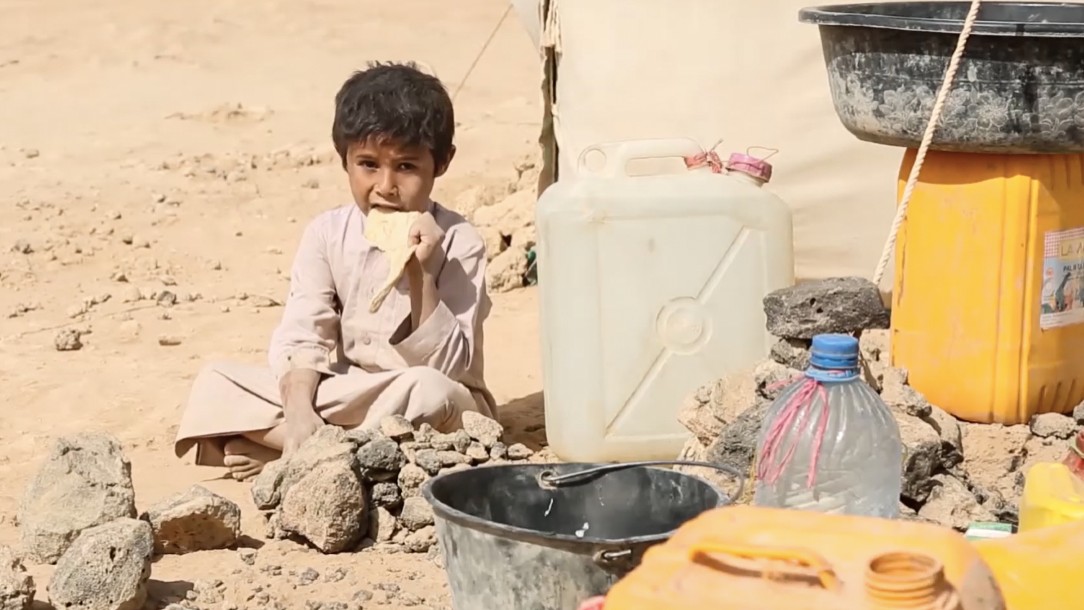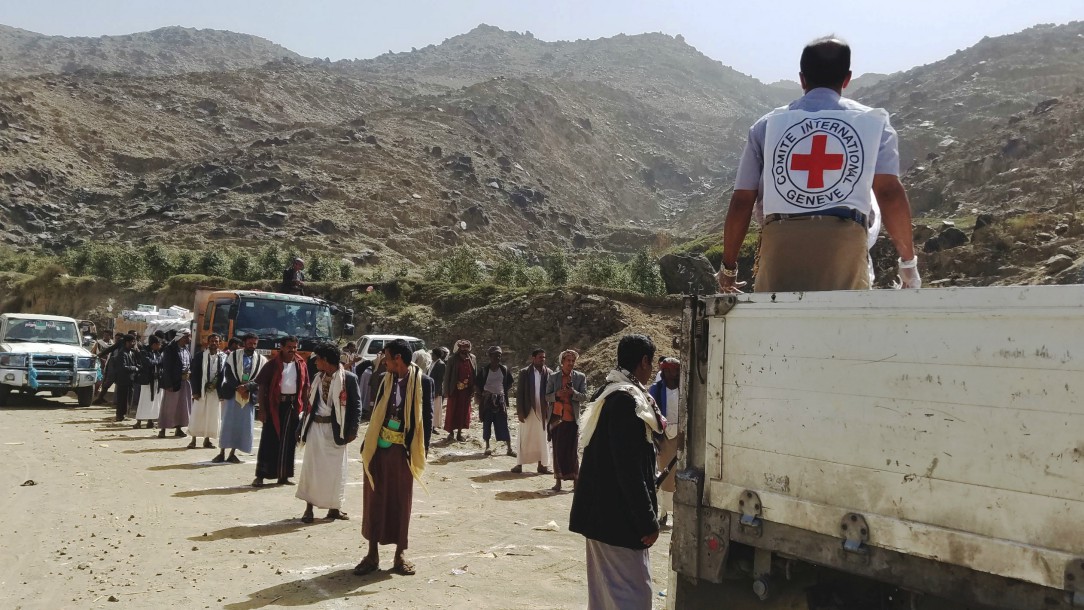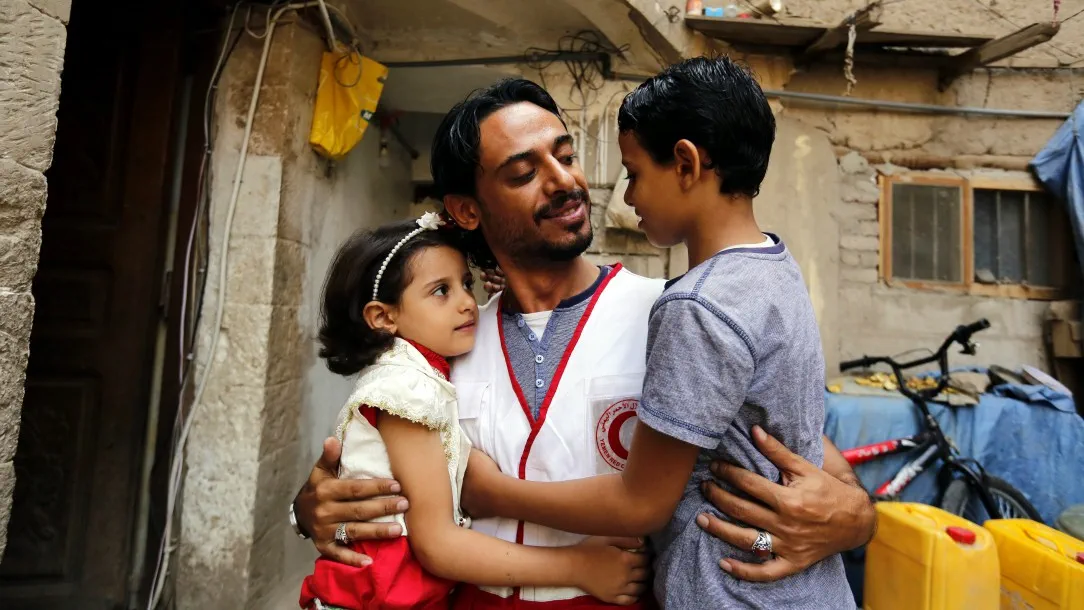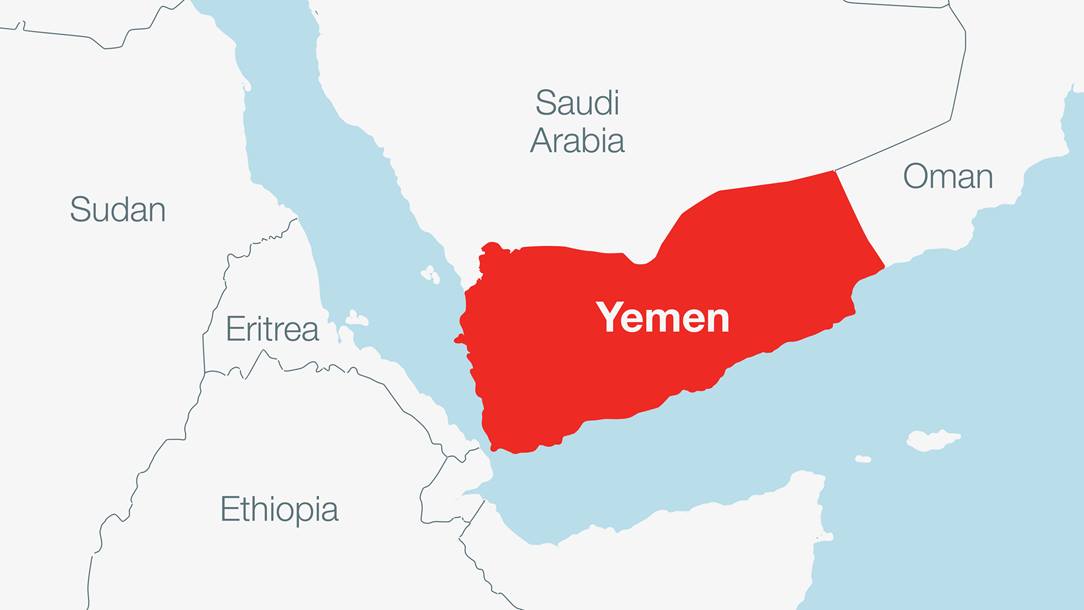What is happening in Yemen in 2024?
Years of conflict, the effects of climate change and a floundering economy mean that Yemen's situation is desperate. It must not be forgotten.
Last updated 22 January 2024
DONATE to the Yemen Crisis Appeal
One of the world's biggest humanitarian crisis
It's 2024, and 21.6 million Yemenis are in dire need of humanitarian support.
Nine years of conflict has affected every part of people's daily lives. The figures are staggering: 17.3 million are struggling to get food, 20.3 million in need of healthcare, 15.3 million in need of water. It goes on.
Diseases such as cholera are a huge issue here, and only half of Yemen’s healthcare facilities are functioning. The country is also reeling from successive climate disasters and a failing economy.
Yemen must not be forgotten
Since fighting began, the Yemen Red Crescent Society has worked tirelessly to provide the basics and pull Yemen back from the brink. They will not stop.
If you can, please support this vital work by donating to the British Red Cross Yemen Crisis appeal.

A boy eats supplies provided by the Yemen Red Crescent Society. Need here is great, and children are bearing the brunt. PHOTO: ICRC
What is the situation in Yemen today?
As of April 2022, a UN-brokered truce has been in place in Yemen. This truce has provided a temporary reprieve from fighting.
However, eight years of conflict have brought Yemen, already one of the poorest countries in the world, to breaking point, and it will take many years for people to recover what has been lost.
Essential services and the economy continue to deteriorate, and the cost of the minimum household expenditures has risen by more than 50 per cent in just one year. More than 80 per cent of the population struggles to access food, safe drinking water and adequate health services.
Yemen has also been plagued by disease outbreaks, such as cholera, diphtheria, and most recently measles, and climatic disasters, such as drought, heavy rainfall, floods and crop-destroying locusts.
What is the role of the Red Cross and Red Crescent in Yemen?
The Yemen Red Crescent Society (YRCS) has thousands of volunteers across Yemen, rooted in local communities. Despite the severe lack of resources and the challenging security situation, it's the primary humanitarian organisation in Yemen.
The YRCS also provide basic medical services, including maternal healthcare. In some places they are the only support available.
Services include:
- providing clean water and improving sanitation
- nationwide prevention and health campaigns such as cholera prevention
- primary first aid services
- psychosocial support to traumatised children, women and men.

The Yemen Red Crescent is the primary humanitarian agency working in the country. PHOTO: ICRC

Staff and volunteers provide healthcare and psychosocial support to traumatised people across Yemen. PHOTO: ICRC
What are the needs in Yemen?
Disease outbreaks
Yemen remains vulnerable to disease outbreaks, including vaccine-preventable diseases. Years of conflict, displacement and climate disasters have depleted the country’s healthcare system and critical infrastructure.
According to the UN, only half of the country’s health facilities are functioning. Women and children are deeply affected by this lack of care. In particular, maternal healthcare remains a challenge across Yemen.
Catastrophic food insecurity in Yemen
Yemen is among the most acutely food insecure countries in the world. Even before the conflict, Yemen imported 90% of its food in the form of wheat, this includes 42% from Russia and Ukraine.
The UN predicated that in 2023 approximately 17.3 million people would face acute food insecurity in Yemen. This is primarily driven by people’s ability to afford basic food products, rather than availability of food.
There have also been further impacts felt by the rise in global food prices, in part due to the Ukraine/Russia conflict.
Climatic disasters
Yemen is one of the most climate vulnerable countries in the world. According to the Food and Agriculture Organization, Yemen experienced moderate to severe drought conditions in the first half of 2022.
These were coupled with an unprecedented rise in temperatures, affecting all cropped regions of the country. In August 2022, 80 per cent of the country received heavy rainfalls, triggering devastating floods across the country that affected hundreds of thousands of people.
Yemen is also often plagued by desert locusts. Intense rainfall and cyclones create ideal conditions for locusts to hatch, breed and spread quickly in vast swarms both across the country and across borders.
Water and sanitation
Even before the current conflict, Yemen was one of the world’s most severely water-stressed countries. Years of conflict and neglected water infrastructure means that millions of Yemenis, including women and children, need to walk for miles to collect water.
The lack of access to clean water has in the past caused major health outbreaks, including the cholera outbreak that started in October 2016.
Economic situation
Most public sector employees, including teachers and healthcare workers, have not received a regular salary in years. According to the UN, though this issue was part of the discussion that led to the truce in 2022, little progress has been made, and the economy has continued to weaken.
The conflict, climate disasters and the impacts of COVID-19 have led to an almost total collapse of the economy. People continue to face a loss of livelihoods and income, which in turn impacts their ability to provide their families with the basics.
Displacement
According to the UN, Yemen faces the sixth largest internal displacement crisis in the world. Around 4.5 million people have been internally displaced since 2015, most of them have been displaced more than once.
How long has the Red Cross Red Crescent Movement worked in Yemen?
The International Committee of the Red Cross (ICRC) has been working in Yemen since 1962, providing aid in collaboration with the YRCS.
The ICRC supports projects to improve health, water and sanitation in vulnerable communities; helps people to become independent financially. The ICRC has also been able to facilitate the return of detainees.
Map of Yemen

How is the British Red Cross supporting Yemen?
The British Red Cross has worked with the Yemen Red Crescent Society for many years.
As well as working with Yemen Red Crescent Society disaster response teams, we are also supporting the YRCS emergency health services in Hajjah, Al Mahweet, and Hadramawt governorates.
These health centres offer free essential health care, as well as emergency obstetrics treatment, and community outreach programmes. Trained expert staff at the centres ensure that people have access to the care they need.
Each centre is stocked with critical equipment and medical supplies to ensure people can receive the treatment they need when they face ill health.
Yemen Crisis Appeal
Help us to reach people living through the world's largest humanitarian crisis by considering a donation to our Yemen Crisis Appeal
DONATE